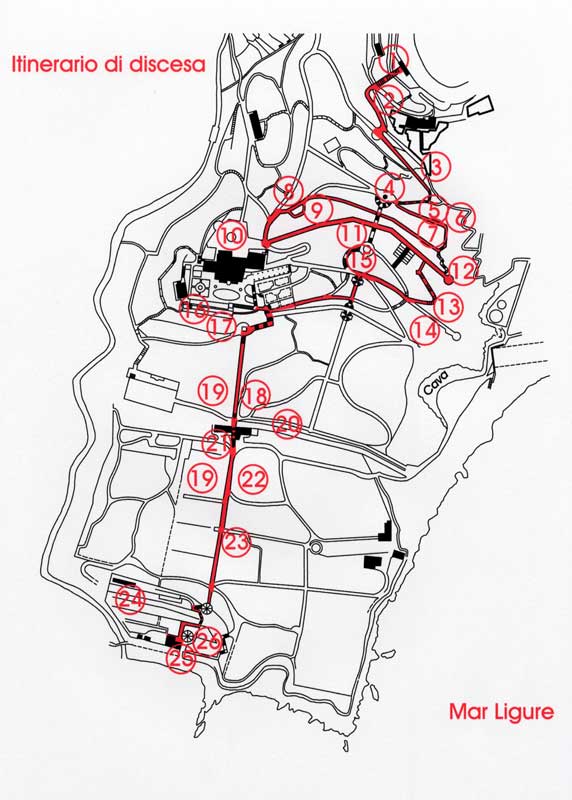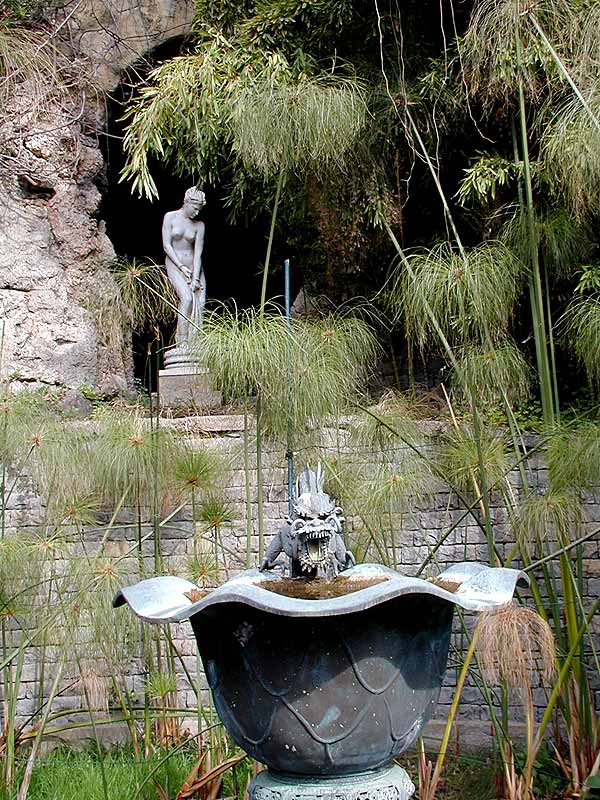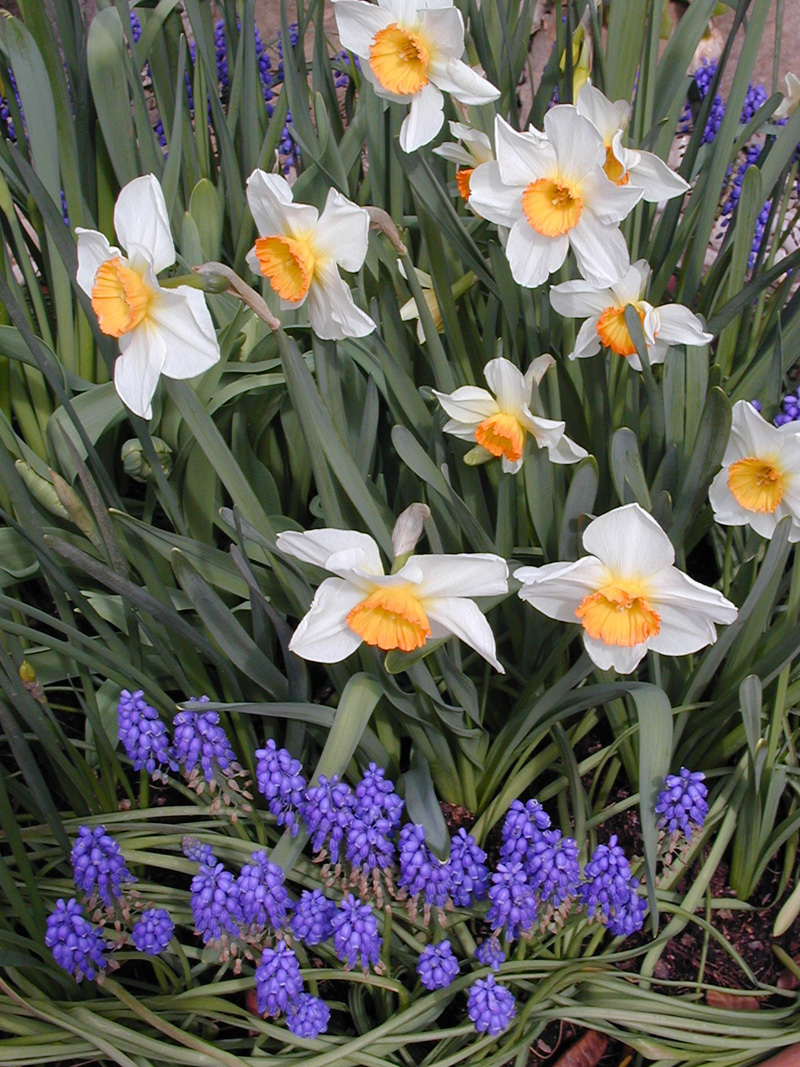Area protetta regionale Giardini Botanici Hanbury
www.giardinihanbury.comThe Botanic Garden: Downhill Itinerary
Nirvana Area - Agave - Aloe - Pergola - Succulent Plants - Fountain of the Dragon - Citrus Groves - Roman Road - Exotic Orchard - Olive Trees Avenue - Café
- Trail Conditions: On foot
- Interest: Flora
- Ficus rubiginosa, of Australian origin (New South Wales). Columnar adventitious roots develop from the branches and enter in contact with the soil.
- Drosanthemum hispidum, South African Aizoacea, blooming in spring.
- Nirvana Area. Under Casa Nirvana, there is a rocaille-bordered fountain with aquatic plants.
- Four Seasons Area. Collection of Agave: succulent plants coming from the tropical and subtropical American regions; here you can find Agave plants of the subgenus Agave: they are plants of big size with even more than two-meter long leaves. Every year some of the most spectacular specimens bloom and, after the fructification, die. On the contrary, other species of a more moderate size (gathered in the subgenus Littaea) continue to vegetate after the blossoming. The small Temple, called "Quattro Stagioni", has been placed here in 1947 and comes from Kingston Park (GB).
- Aloe. Succulent plants of African origin.
- Yucca australis, coming from the north-east of Mexico; specimen of considerable dimensions blooming in June.
- Cyclamens' Area. Among the agave plants, at the end of the winter you can find several flowers of Cyclamen persicum. At the foot of some olive trees, in September the Brunsvigia Josephinae blooms, a curious South African Amaryllidaceae dedicated to Redouté a Josephine, Napoleon's wife and innovator of Malmaison garden.
- Cupressus lusitanica, of Mexican origin. The specimen, of huge dimensions, derives from a seed lot received by Thomas Hanbury in 1869 by M. Thuret from Antibes.
- Samuela carnerosana. Samuela, coming from Mexico and Texas, is similar to Yucca in its general features, and distinguishes itself for some aspects of its flower. The specimen of the Gardens derives from a seed lot received in 1900 by Prof. William Trealase from St. Louis, who described the genus.
- Japanese Bell. The main inscriptions refer to the dedication: "The eternal bell of the illustrious Shingon sect", and the name of the temple "Hôkôzan Kwannon Mitsuji". The smaller inscriptions tell the tale of the consecration, and make a list of the supporters. Under the list there are date and location: 1764, Kanda (suburb of Tokyo).
- Pergola. Collection of Bignoniaceae, trees and creepers of tropical and subtropical origin: Pandorea, Campsis, Tecoma, Jacaranda, Pyrostegia, Bignonia, Clytostoma, Macfadyena.
- Eucalyptus sideroxylon, species with persistent bark, coming from eastern Australia. It is a tree of considerable economic importance for the timber production; the very hard timber ("syderos xylon" = "timber like iron"), is used in Australia for buildings and railway sleepers. The leaves are gathered for the extraction of essential oils; the flowers, rich in nectar, are longed for birds.
- Succulent Plants Area (Euphorbiaceae, Cactaceae, Agavaceae, Aloaceae) with two ancient specimens of Beaucarnea stricta and Beaucarnea recurvata.
- Cork Oak (Quercus suber).
- The Fountain of the Dragon. Japanese bronze sculpture coming from Kyoto. In the basin, paper plants are cultivated (Cyperus papyrus): it is the northernmost acclimatization station.
- The Fragrances Garden. Created by Lady Dorothy Hanbury in 1928. It gathers aromatic and perfumed plants. The essences are given off by the flowers (Citrus, Lonicera, Syringa, Heliotropium, Chimonanthus, Akebia, Jasminum), the leaves (Lippia, Pelargonium, Lavandula, Cymbopogon, Thymus, Rosmarinus, Salvia), the wood (Calycanthus). In summer almost all the specimens are resting; however, they give off their perfume at the sunset.
- Moorish Mausoleum, projected and built by Arch. Pio Soli from Sanremo. Here the ashes of Thomas Hanbury and his wife Katherine Pease are buried.
- Casimiroa edulis, specimen planted by Daniel Hanbury in December 1867.
- Citrus Groves. Important collection of ancient citrus varieties. Among them, the so-called "pummelli" (or Shaddock, from the name of the English captain who brought the plant in Europe from India), with fruits similar to grapefruits, but of huge size (up to 1,500 grams!).
- Roman Road (ancient Via Julia Augusta).
- Elaeocarpus obovatus, of Australian origin.
- Exotic Orchard with specimens of the genera Acca, Carica, Corinocarpus, Persea, Macadamia, Mespilus, Diospyros, Eugenia, Hovenia.
- Olive Trees Avenue. The ancient specimen in the middle of the alley is more than 250 years old. Behind it, a big specimen of Pinus canariensis, planted by Daniel Hanbury in November 1870. At the end of the alley the olive press. Wheel and grindstone have been taken from a nearby mill-olive press.
- Dry Environments Sage. Area to be completed.
- Café - Refreshment Point. Beyond the fence, the beach.
- Pittosporum phillyraeoides (of Australian origin), Buddleja madascariensis (Madagascar), blooming from January to April.
© 2024 - Università degli Studi di Genova









